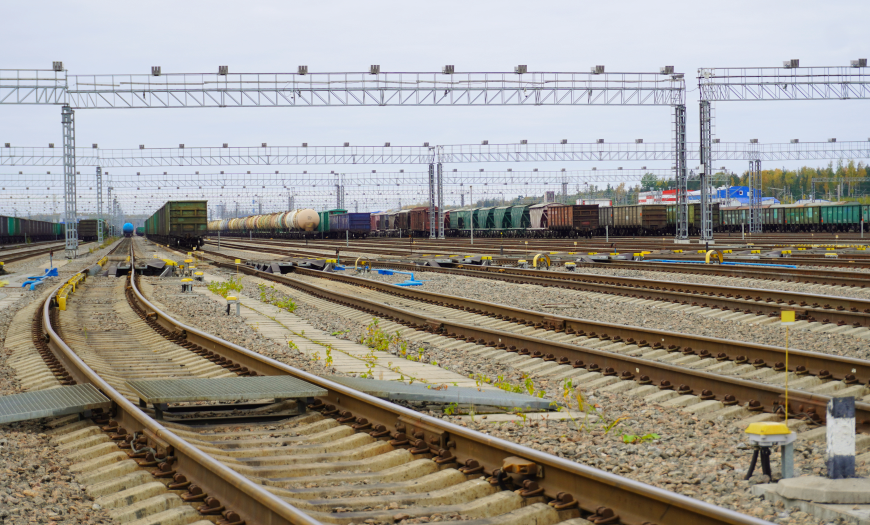In 2011, the Ust-Luga Company established that by 2013–2014 the port's freight through the railway component is planned to be within 60 million tons.
In this connection, the construction of a new Luzhskaya-Sortirovochnaya station became urgent, the main task of which is to exclude the entry of trains going to Ust-Luga port to the St. Petersburg railway hub. Construction of the station allowed to improve the environmental situation in St. Petersburg, and reduce the tariff component for the railway part of the total cost of transportation of goods, due to the fact that the compounds are delivered immediately to the yard of the Ust-Luga railroad hub.
The sorting station is a complex technical and technological railway complex intended for distribution according to the nomenclature of the incoming cargoes and for the formation of homogeneous trains for delivery to a particular terminal, where, in turn, freight cars are again sorted according to the order of unloading of goods.
As the senior vice-president of JSC Russian Railways V.Gapanovich noted, the Luzhskaya-Sortirovochnaya station was the first in the territory of Russia, which can rightly be assigned the status of an "automatic station".
A distinctive feature of this station was the maximum automation of all processes for the disbandment of trains, the management of arrows, retarders, sedimenters and other technological objects.
When creating the project specialists of PJSC Lengiprotrans took into account the existing foreign experience of such construction, therefore, it was envisaged the use of modern technologies with local use of the most modern imported equipment. Because of this, the facility turns out to be expensive, but the technical and economic comparison of the use of imported equipment has shown that it is more reliable, it allows to significantly reduce operating costs, ensures safety and safety of cargo at the time of sorting of wagons, which allows to significantly reduce the staff of maintenance personnel.
The following modern technologies were applied at the station:
- thrusting of the composition on the gravity hump by the locomotive without the participation of the driver using the remote control system produced by Siemens;
- automatic sedimentation of wagons in the sorting park with the use of specialized pushcarts;
- automatic control of turnouts of the high-end neck during the dissolution of trains from the hump.
The most urgent task, which at that time was facing the designers of PJSC Lengiprotrans, Giprotranssignalsvyaz and Siemens, whose equipment was planned for the construction of the slide, was to determine the necessary measures for adapting foreign equipment to the modern domestic developments. Imported high-tech equipment with a "software" wired into it was planned to be used in small volumes and exclusively in the local zone.
Another important and large-scale task was the alignment of the Russian control system for arrows and signals at the sorting station with German control systems for the hill and arrows.


